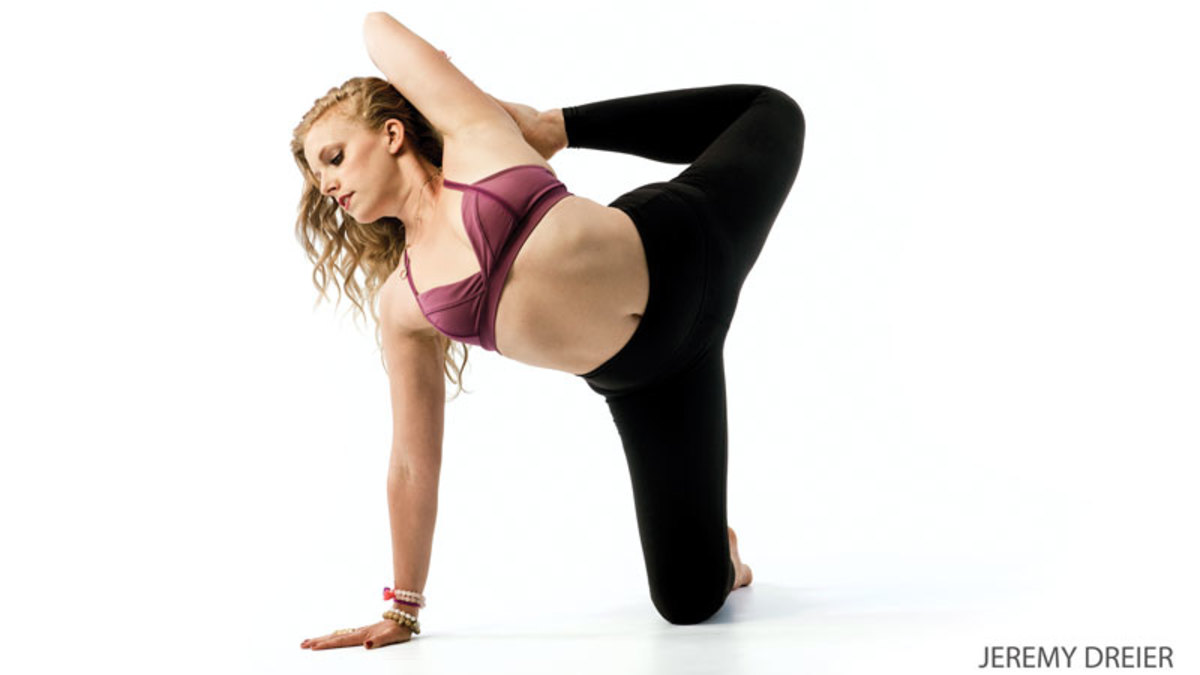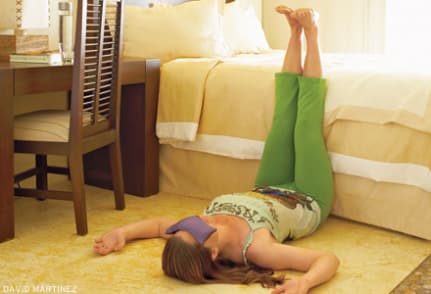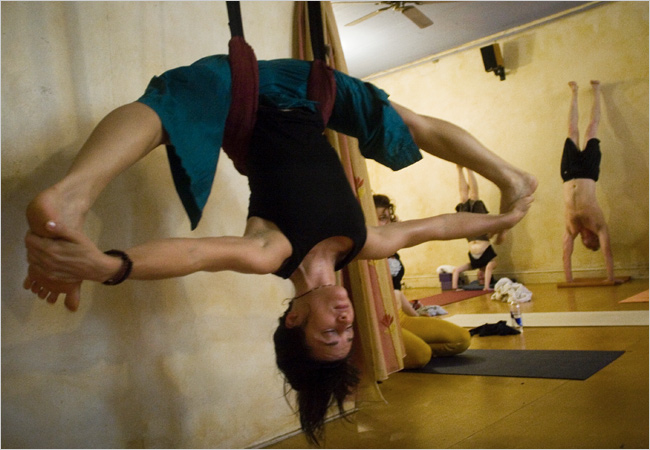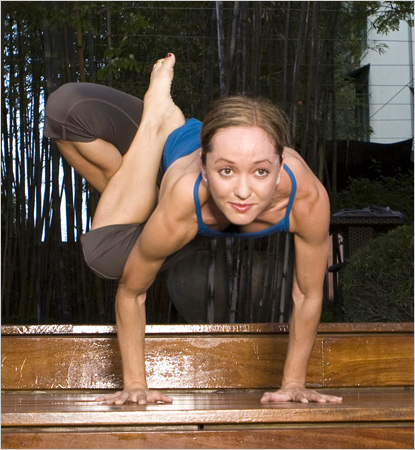A Nebraska-based yogini finds her groove bringing rock ‘n’ roll to yoga.
A Nebraska-based yogini finds her groove bringing rock ‘n’ roll to yoga.
From a musical family (her uncle is Matthew Sweet), Mary Clare Sweet followed her passion for rhythm and dance to New York City, where she became a student of the venerable Sri Dharma Mittra, founder of the Dharma Yoga Center. From there, Sweet’s yoga career has taken off. At age 26, she opened her first vinyasa studio in Omaha, Nebraska: Lotus House of Yoga. Five years later, she is the owner of five Lotus House locations and a regular teacher at yoga festivals nationwide.
What does your practice look like?
My day starts with meditation and breathwork. It’s not easy, since I want to check my phone first thing when I get up, but I try to resist, sitting for about 10 minutes and then doing Kundalini exercises, including the Ego Eradicator. In total, I try to practice yoga for an hour a day. Some days, I’ll just let my body move, like when I was a ballet and jazz dancer.
How were you introduced to yoga?
When I was growing up, my mom practiced in a basement studio with tapestries on the walls. And I grew up dancing around the house with my parents and rock-musician uncle. There was always a token yoga class at dance camp. But it wasn’t until I moved to New York City and met Dharma Mittra that I thought, ‘This is what I want to feel all the time’—the way I felt when I looked into his eyes and saw the spark inside his heart. There was undeniable compassion.
Music is big for you and for Lotus House of Yoga. How is it incorporated into your classes?
Making a yoga playlist requires intention. I base mine on the chakras, starting with grounding music that brings you into the moment. Then I move into rhythmic sounds that you can feel around the second [svadhisthana] chakra. Next, I bring in music that is fiery for the third [manipura] chakra. For the heart chakra, I use music that helps students tap into collective consciousness. Near the end of class, the songs get more poetic to help students center on self-expression and the fifth [visuddha] chakra. In the final moments, I want angelic sounds that can activate the third eye and crown chakra. I’m looking for vibrations that dissolve your ego.
Sweet shares a few more of her favorite things:
Pose: Navasana [Boat Pose] lights a fire in me to speak my truth—to say what I mean and mean what I say—without feeling afraid.
Song: “You Make Loving Fun,” by Fleetwood Mac. It reminds me not to take things too seriously.
Practice Space: I feel safe and stable at my mom’s house and dad’s house. There’s a root-chakra energy there; this is where I came from.
Food : I eat seaweed in everything: seaweed salads, wraps, sushi. It offers phytonutrients; it’s salty, savory, and so versatile.
Color: Since I was a little girl, yellow has been my favorite color. It means life, sustenance, growth, sunshine, and courage.
Practice to Mary Clare Sweet's Yoga Playlist











